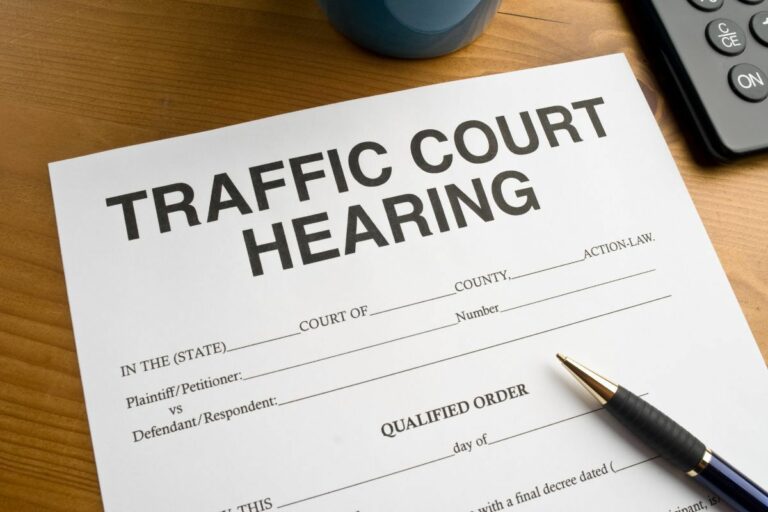A Guide to Lane-Splitting Laws and Safety Tips for California Motorcyclists
As a motorcyclist in California, you enjoy a unique advantage over other drivers on the road: the legal practice of lane-splitting. While this maneuver allows you to navigate more efficiently through traffic, it’s critical to understand the regulations governing lane-splitting and follow safety guidelines to avoid citations and accidents. In this comprehensive guide, we’ll discuss California’s lane-splitting laws, debunk some common misconceptions, highlight essential safety tips, and explore how our expert legal team can help motorcyclists contest lane-splitting-related violations.
In 2016, California became the first state in the United States to legalize motorcycle lane-splitting, opening up opportunities for motorcyclists to traverse congested roads more freely. This landmark decision was met with mixed reactions from the public due to concerns related to safety and confusion about the legality of the practice. However, since lane-splitting became legal, studies have shown that when done safely, the practice has not significantly increased the risk of accidents or injuries.
As a motorcyclist, staying informed about California’s lane-splitting regulations and understanding the safety guidelines associated with this practice can help you minimize risks and avoid citations. Furthermore, our legal team’s valuable guidance and expertise can be a critical asset in defending your rights and navigating the legal process if you’re cited for a lane-splitting violation.
Whether you’re an experienced rider or new to the world of motorcycling in California, our guide will provide you with essential insights and actionable advice to keep you safe on the road and informed about your rights when it comes to lane-splitting.
Stay tuned as we delve into the legalities and safety precautions of lane-splitting in California and explore how our expert legal team can help motorcyclists defend their rights and contest violations related to this unique aspect of life on two wheels.
Understanding California’s Lane-Splitting Laws
To safely and legally practice lane-splitting in California, it’s essential to familiarize yourself with the regulations governing this maneuver:
1. Legalization: In 2016, California became the first state to legalize motorcycle lane-splitting statewide. Assembly Bill 51 defined lane-splitting as a motorcyclist driving between rows of stopped or moving vehicles in the same lane.
2. Guidelines: While lane-splitting is legal in California, the California Highway Patrol (CHP) does not specifically endorse the practice. Instead, the CHP has issued general guidelines for motorcyclists to follow when lane-splitting, emphasizing that riders should travel at a speed no more than 15 mph faster than surrounding traffic and avoid lane-splitting altogether if traffic is moving at 50 mph or faster.
3. Enforcement: Although lane-splitting is not illegal, motorcyclists can still be cited for lane-splitting-related violations, such as unsafe or reckless driving.
Debunking Lane-Splitting Misconceptions
As lane-splitting is unique to California, there are several misconceptions surrounding the practice that warrant clarification:
1. Lane-Splitting Is Limited to Freeway: Contrary to popular belief, California’s lane-splitting law does not exclusively apply to freeways. Motorcyclists can also legally lane-split on other types of roads, such as city streets unless local ordinances prohibit the practice. However, it is important to exercise caution and consider road conditions, traffic patterns, and local regulations before lane-splitting on any road.
2. Filtering and Lane-Sharing Are Different: Although often used interchangeably, “filtering” and “lane-sharing” are distinct from lane-splitting. Filtering refers to a motorcycle’s ability to move to the front of stopped traffic at intersections, while lane-sharing involves multiple motorcycles riding side-by-side within the same lane. Neither filtering nor lane-sharing is specifically addressed within California’s lane-splitting law.
Safety Tips for Lane-Splitting Riders
To minimize risks and maximize safety while lane-splitting, consider the following guidelines:
1. Be Aware and Stay Alert: Lane-splitting requires increased attention from riders. Always pay attention to traffic patterns, road conditions, and other drivers’ actions to anticipate potential obstacles and opportunities to maneuver safely.
2. Wear Protective Gear: High-visibility gear, including helmets, jackets, and gloves, can significantly improve a motorcyclist’s visibility to other drivers and reduce the risk of accidents during lane-splitting.
3. Practice Defensive Driving: Adopting a defensive driving approach, such as maintaining a safe following distance, avoiding blind spots, and anticipating sudden lane changes, can further reduce the risk of accidents while lane-splitting.
Contesting a Lane-Splitting Citation
If you have been cited for a lane-splitting violation, our experienced legal team can provide the guidance and representation needed to contest the charge:
1. Review the Citation Details: Gather and examine the citation information, including the specific violation, location, and any related evidence.
2. Understand the Legal Framework: Consult with our legal team to better comprehend the lane-splitting law, potential defenses, and the process for contesting the citation.
3. Build Your Defense: With our legal guidance, develop a tailored defense strategy, examining crucial factors, such as road conditions, traffic patterns, and compliance with CHP guidelines.
Protect Your Rights with Our Legal Expertise
Motorcyclists in California enjoy the freedom of lane-splitting but must adhere to the law and follow safety precautions. If you are cited for a lane-splitting violation, trust our knowledge and legal expertise to protect your rights and navigate the contesting process. With a meticulous approach to building your defense, our traffic violations attorney at Mr. Ticket can help you achieve the best possible outcome for your case. Get in touch with us today.




